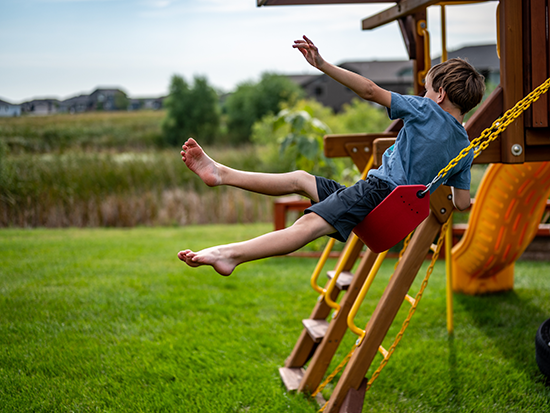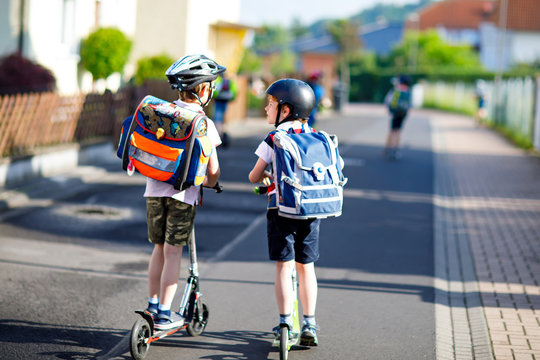Media contact: Brianna Hoge
 UAB expert discusses tips for parents to stay vigilant and prepared this summer.While camps, pools and playgrounds fill up, experts at the University of Alabama at Birmingham discuss the importance of parents’ staying alert and taking steps to keep children safe.
UAB expert discusses tips for parents to stay vigilant and prepared this summer.While camps, pools and playgrounds fill up, experts at the University of Alabama at Birmingham discuss the importance of parents’ staying alert and taking steps to keep children safe.
“Warm weather months bring fun times, but they can hold many hidden harms,” said David Schwebel, Ph.D., director of the youth safety lab at UAB. “It is important for parents to be aware so the good times will not be interrupted, especially while children are playing on playgrounds, in swimming pools, and with wheeled toys such as scooters, skateboards and bicycles.”
Playgrounds
Playgrounds offer a great space for children, especially during the summer months. According to Schwebel, these vibrant play areas provide physical activity and contribute significantly to a child’s mental development.
“Trying the monkey bars for the first time or even learning to use their imagination in a new space can be great for a child’s development,” Schwebel said.
While playgrounds are designed with children in mind, safety risks exist. Schwebel recommends that parents pay attention to the age range on playground equipment and ensure their child plays in the area designated for their age.
Parents should actively engage while at the playground. This allows them to keep an eye on their children and encourages parents to participate in playtime. Parents should avoid distractions such as phone usage while in these spaces.
“Playgrounds are designed to be a safe haven, but parents need to remain vigilant to keep children safe,” Schwebel said. “It’s important to let kids do things on their own, but sometimes being a spotter or playing with the child is a good way to keep them safe and even have a little fun yourself.”
He advises parents to pay attention to the playground surface and its surroundings. There might be hard ground or open gates that could pose safety risks.
“Many newer parks have a soft surface, but older or underfunded playgrounds might still have harder surfaces that could be harmful to children,” Schwebel said. “Most parks and playgrounds are closed off from dangerous areas or busy roads by fencing. Gates may be left open, and children can run off. It is important to keep a close eye on your children.”
 Schwebel suggests children should be wearing a helmet while riding a bike, scooter or other outdoor vehicle, whether it is a dirt road, a driveway or a parking pad.Helmets
Schwebel suggests children should be wearing a helmet while riding a bike, scooter or other outdoor vehicle, whether it is a dirt road, a driveway or a parking pad.Helmets
According to the National Highway Traffic Safety Administration, more children between the ages of 5 and 14 go to the hospital with bicycle-related injuries than any other sport. Head injuries are some of the most common reasons for these visits.
Schwebel suggests children should be wearing a helmet while riding a bike, scooter or other outdoor vehicle, whether it is a dirt road, a driveway or a parking pad.
Helmets are crucial for children because their brains are still developing. When they fall and hit their heads, they face a higher risk of permanent brain damage.
“Brain issues are fragile,” Schwebel said. “When children take a fall, that tissue can bounce into the child’s hard skull and injuries occur. Wearing a helmet can help absorb some of the fall and possibly save their life.”
To ensure proper protection for children, helmets must fit correctly. NHTSA recommends using the two-finger method to determine how to wear a helmet:
- Position the helmet two fingers above the eyebrows.
- The helmet should fit snugly on the rider’s head.
- The chin strap should be snug against the face, but the rider should be able to fit two fingers underneath.
- Helmets should not rock back and forth on the rider’s head; if they do, adjustments are needed.
- Parents should choose a helmet that fits their child’s head rather than one the child can “grow into.”
The NHTSA recommends replacing helmets after any crash as damage to the helmet may not always be visible. Adults are encouraged to wear helmets to keep themselves safe and model this safety practice for children.
 David Schwebel, Ph.D.,
David Schwebel, Ph.D.,
Photography: Lexi CoonSwim Safety
According to the American Red Cross, 10 people a day become victim to unintentional drowning, and on average, two of those victims are under the age of 14. The Centers for Disease Control and Prevention says drowning is the No. 1 cause of death for children ages 1 to 4.
Schwebel says there are four dimensions to swim safety: attention, proximity, continuity and competency. Each component is vital to increase the safety of children when around bodies of water.
When children are swimming, the supervising adult should avoid distractions, whether from a phone, a book or even alcohol.
“Often at pool parties, the adults are having fun with each other, or they want to have a few alcoholic drinks,” Schwebel said. “This is fine as long as one person is remaining sober and giving their full attention to watching the children swim.”
Proximity to the body of water is essential to drowning prevention. If caregivers are not close enough to act in an emergency, valuable, lifesaving seconds could be lost.
Continuity includes having a designated person who is always watching the children. Schwebel recommends the adults take shifts so the person watching does not get tired or bored.
“When at pool parties and other events with a body of water, an adult needs to be supervising the children at all times,” Schwebel said. “Drowning is often silent, so having eyes on the children is the best way to prevent accidents.”
Sometimes the caregivers are watching the children but do not have the skills to save them if something goes wrong.
“Competency is knowing what to do in the case of a water emergency, such as CPR,” Schwebel said. “We want to make sure that the adults who are watching the kids know what to do if something goes wrong.”
Being prepared is important all the time, but especially in summer. The UAB University Recreation Center offers CPR and First Aid classes. Click here to sign up for a class.